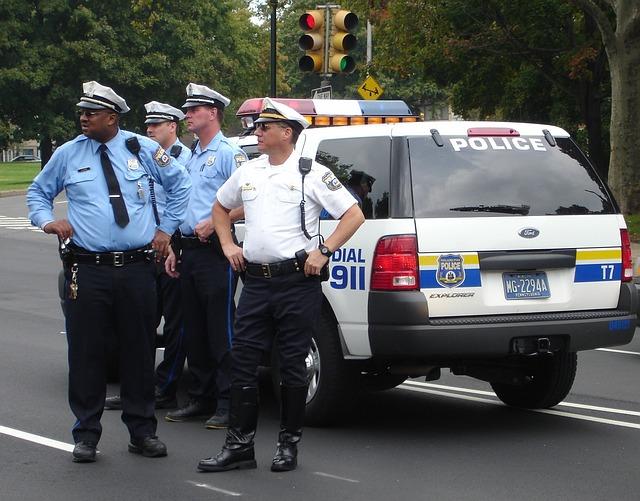In the bustling streets of Pakistan, where vibrant markets pulse with life and the aroma of street food wafts through the air, a silent struggle unfolds beneath the surface. Theft, often shrouded in shadows, punctuates the daily experiences of its citizens, weaving an intricate narrative of desperation, survival, and societal challenges. This article embarks on a journey to unveil these shadows, offering insights into the socio-economic factors that drive theft, the implications for community safety, and the responses from law enforcement and civil society. By shedding light on this pervasive issue, we aim to foster a deeper understanding of the complexities surrounding theft in Pakistan, encouraging dialogue and solutions that promote safety and justice for all.
Exploring the Underlying Causes of Street Theft in Pakistan
Street theft in Pakistan can be traced back to a confluence of social, economic, and psychological factors that create an environment ripe for crime. One of the most prominent causes is pervasive poverty, which drives individuals towards desperate measures as they struggle to meet their basic needs. The lack of access to education and employment opportunities further compounds the issue, leaving many without viable means of supporting themselves. In urban areas, the anonymity provided by bustling crowds can embolden offenders, fostering a sense of impunity that perpetuates the cycle of theft. Additionally, drug addiction is a significant contributing factor, as individuals may resort to stealing to finance their habits, thus leading to a rise in opportunistic crimes.
Another layer to this complex issue involves the socio-cultural dynamics prevalent in various communities. The normalization of theft—often viewed as a survival tactic—can desensitize individuals to the harm they perpetrate, creating a troubling moral ambiguity. Societal attitudes that may inadvertently glorify material wealth further exacerbate the problem, leading to a misguided sense of entitlement. Moreover, ineffective law enforcement and judicial systems can create a climate of fear and distrust among citizens, discouraging them from reporting crimes. To tackle these underlying issues, comprehensive approaches that address the socio-economic roots of theft, alongside community engagement and stronger law enforcement, are necessary to foster safer urban environments.

Analyzing the Impact of Socioeconomic Factors on Criminal Behavior
Socioeconomic factors play a significant role in shaping criminal behavior, particularly in urban environments like Pakistan’s bustling streets. Economic instability, high unemployment rates, and inadequate educational opportunities create a fertile ground for crime, specifically theft. Individuals facing dire financial situations may resort to stealing as a means of survival, often justifying their actions based on their circumstances. The psychological toll of poverty can lead to a culture of desperation where theft becomes normalized, seen as an avenue for sustenance rather than an immoral act.
Moreover, social structures contribute heavily to the prevalence of such behaviors. A breakdown in community cohesion and the absence of social support networks can exacerbate feelings of isolation and hopelessness. This disconnection often leaves individuals without the moral guidance or opportunities that might deter criminal activities. To better understand these dynamics, it is essential to analyze the following factors that have proven influential in fostering an environment conducive to theft:
- Poverty levels: Higher rates correlate with increased crime.
- Education access: Lack of education limits employment opportunities.
- Unemployment rates: Rising unemployment often leads to higher crime rates.
- Community cohesion: Weaker social ties can embolden criminal behavior.
This intricate interplay between socioeconomic factors and criminal behavior necessitates a holistic approach to crime prevention, focusing not only on punitive measures but also addressing the root causes embedded within the social fabric of society. Implementing effective policies that promote education, employment, and community engagement could pave the way for transformative change.

Innovative Approaches to Community Engagement for Crime Prevention
Community engagement plays a pivotal role in addressing crime, particularly theft, by fostering trust and cooperation between citizens and law enforcement agencies. Innovative approaches use technology and social initiatives to empower communities. For example, local apps that allow residents to report suspicious activities anonymously can enhance surveillance and encourage vigilance. Furthermore, establishing neighborhood watch groups not only deters potential criminals but also strengthens social bonds, creating an environment where individuals feel responsible for one another’s safety. Programs that involve local schools in crime prevention workshops have proven effective in raising awareness among youth, highlighting the importance of responsibility and community well-being.
Another promising avenue is the implementation of art and cultural projects that address crime-related issues. Graffiti murals, community theater, and public art installations can serve as powerful mediums for storytelling, allowing community members to share personal experiences regarding theft and its impact. These creative forms of expression not only engage but also educate the public, fostering discussions on prevention strategies. Additionally, partnerships with local businesses can create a network of support that incentivizes residents to take active roles in maintaining community safety through initiatives such as “Shop Local, Stay Safe” campaigns that promote awareness while encouraging customers to recognize and report suspicious behaviors.

Strengthening Law Enforcement Strategies to Combat Urban Theft
Urban theft remains a pressing issue in Pakistan, necessitating a comprehensive strategy to bolster law enforcement efforts. Authorities must harness technology and data analytics to pinpoint crime hotspots and deploy resources more effectively. By establishing real-time crime mapping, law enforcement agencies can enhance their presence in areas where theft incidents are on the rise. Engaging with the community is crucial; educating citizens about crime prevention measures empowers them and fosters trust between the police and the public.
To further strengthen these strategies, collaboration between various stakeholders is essential. Initiatives could include:
- Public Awareness Campaigns: Informing the public about reporting thefts and securing property.
- Community Policing: Encouraging police to take an active role in neighborhoods.
- Partnerships with Local Businesses: Implementing security measures in public areas and monitoring with CCTV.
Additionally, effective training programs for law enforcement personnel can enhance their ability to respond swiftly and appropriately to theft incidents. It is critical to foster a unified approach that not only focuses on enforcement but also seeks to address the root causes of crime through community investment and social development.
To Wrap It Up
As we close the chapter on our exploration of theft in Pakistan’s streets, it becomes clear that the issue is not merely a reflection of criminality, but a complex interplay of socio-economic factors, cultural nuances, and systemic challenges. The stories shared and the statistics presented serve as a reminder that the shadows cast by theft are deep, affecting not only the victims but also the fabric of society as a whole.
By understanding the roots of this phenomenon and acknowledging the multifaceted realities behind it, we can begin to envision a future where communities come together to combat crime and reclaim their streets. Awareness, empathy, and proactive measures may pave the way for a safer and more secure environment. As we look towards potential solutions, let us remember that in the quest for social justice, enlightenment and dialogue are our most potent allies. The road ahead requires collective effort, patience, and resilience, but it is one we must navigate together, step by step, toward a brighter and safer tomorrow.



